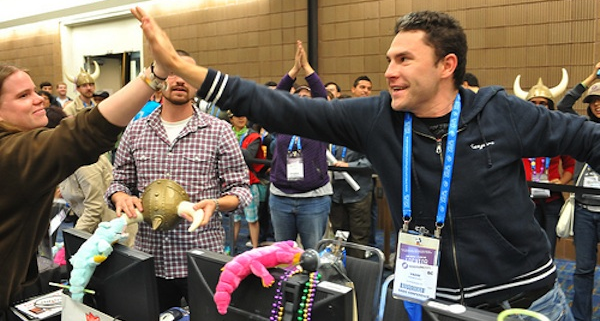dmlcentral.net
Young Black Males, Learning, and Video Games
A recent report on educational achievement among young black males describes a “national catastrophe” in primary, secondary, and higher education that is reinforced by policy failures and funding shortfalls. “A Call for Change: The Social and Educational Factors Contributing to the Outcomes of Black Males in Urban Schools” uses data largely from the U.S. Department of Education to paint a grim picture of an achievement gap between black and white students, reinforcing the message of recent books like Pedro Noguera’s The Trouble with Black Boys: Race, Equity, and the Future of Public Education. While the Obama White House has become known for promoting video games as a way to teach science, technology, engineering, math, and as a method to promote healthier eating and exercise among kids with sedentary lifestyles and pop culture habits, often the Presidential message targeted to African-American urban youth emphasizes traditional print culture literacies in reading and writing. Researcher Betsy James DiSalvo from the Georgia Institute of Technology is taking a different approach to the achievement gap. Her work is focused on understanding the role that video games play in urban African-American youth culture.… more
Student-led Curriculum: Demanding, Digital, Compelling
At November’s University of California Institute for Research in the Arts conference, the emphasis was on college courses that couldn’t be planned out according to set syllabi and fixed course objectives, because students were expected to be co-creators of the classes in which they often found themselves enrolled. Whether capitalizing on emergent interactions with online or offline communities, such courses defy predictability, because the students on the class roster aren’t the only participants in a new generation of service learning courses that take advantage of social media technologies. For example, at the Otis College of Art and Design, a course like neighborgapbridge might begin with a shopping list on the first day of class, progress to a trip to the grocery store around the corner, and end with a cookout at the local park. Of course, the basic questions that neighborgapbridge explores are ones rarely posed in a traditional lecture hall: “Can artists + designers collaborate + assume the role of ethnographers to investigate their neighbors? Can they identify ‘gaps’ in communication and propose ‘bridges’ to connect them?” Half-way through the semester, professors allow for the big “student takeover” to take place, and then they sit back to observe what happens. The Student-Based Creative Exchange at UC Santa Barbara turns the curriculum entirely over to students, who might choose sewing, welding, and button making over conventional reading, writing, and research activities. One of the most enthusiastic proponents of this new form of anarchic digital-oriented project-based service learning is Mark Marino of the University of Southern California. Last year Marino’s students signed up for a summer semester of a required writing course but ended up creating SOS Classroom.… more
Participation, Technology, and the Power of Sharing
This year’s convention of the Association for Computing Machinery’s Special Interest Group on Graphics and Interactive Techniques (SIGGRAPH) attracted more than 20,000 programmers, artists, researchers, filmmakers, and gaming professionals - as well as students and academics from almost 80 countries. Apparently SIGGRAPH is also promising to transform contemporary education.… more


